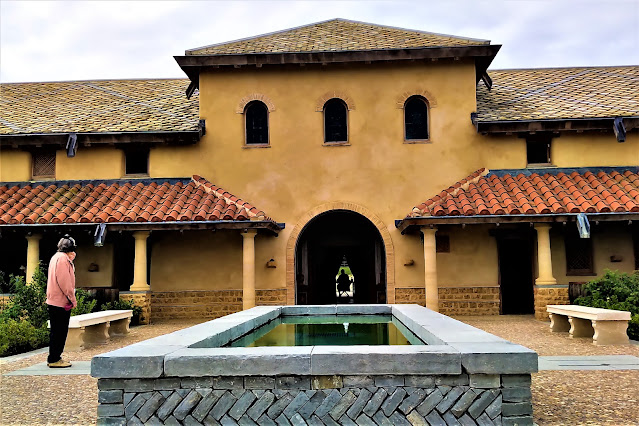Rothesay Castle, Isle of Bute, an impressive structure with historic connection with Scottish royalty.
- Get link
- X
- Other Apps
This evening, I am focusing on Rothesay Castle which is located in the principal town of the same name on Isle of Bute which in turn is located off the west coast of Scotland and a 35 minute ferry trip from Wemyss Bay, in turn about a 45 minute drive from Glasgow.
Onomatology: As will be evident from the narrative below, Rothesay has extensive links with the Viking era in which context is should be noted that the name is probably derived from 'Roderick's Isle'.
Royal Connections: Links with Scottish and British royalty are summarised below. Since 1952 Charles, Prince of Wales, has held the title of Duke of Rothesay and uses it when in Scotland. He has the formal Scottish style of HRH The Prince Charles, Duke of Rothesay.
Access:The site is managed by Historic Environment Scotland and is usually open to visitors.
Castle Interior
- Bute was first settled by the Vikings in the 9th century and became part of the Norse Kingdom of Man and the Isles.
- By end of the 12th century the island stood at the westward boundary of the expanding kingdom of the Scots.
- During end of 12th century the High Steward seized control of Bute and the other islands on the Firth (estuary) of Clyde.
- Around AD 1200 Alan, High Steward, constructed a huge circular curtain wall to provide a barrier to the Norse threat.
- At the treaty of Perth in 1266 Bute was finally confirmed as belonging to Scotland. (The Norse had laid siege to Rothesay Castle in 1230 and 1263 as a consequence of which the four corner towers were added in the second half of the 13th century.)
- The new towers were constructed with splayed bases and featured unusual, stirrup-shaped arrow slits.
- Rothesay became a royal residence around 1371 when Robert II acceded to the throne.
- During the reign of James IV, Rothesay was a strategically important base during the campaigns to extend royal control throughout the Western Highlands and Isles.
- Between 1518 and 1520 an additional feature, known as ‘le dungeoun’ was added. This served as the private apartment of the keeper of the castle and as royal lodging for the Stewart kings during visits.
- The additional features, including a Chapel Royal, were completed before the death of James V in 1542.
- The castle was garrisoned by Cromwell’s troops during the period 1650-`1659. At this time the outer works were reconstructed and outer gun platforms added.
- It is believed that the castle’s garrison demolished part of the castle prior to the return of Charles II to the throne.
- In 1685 the last habitable remains were destroyed by fire, possibly by supporters of the Earl of Argyll during the rebellion following the death of Charles II.
- Get link
- X
- Other Apps






Comments
Post a Comment